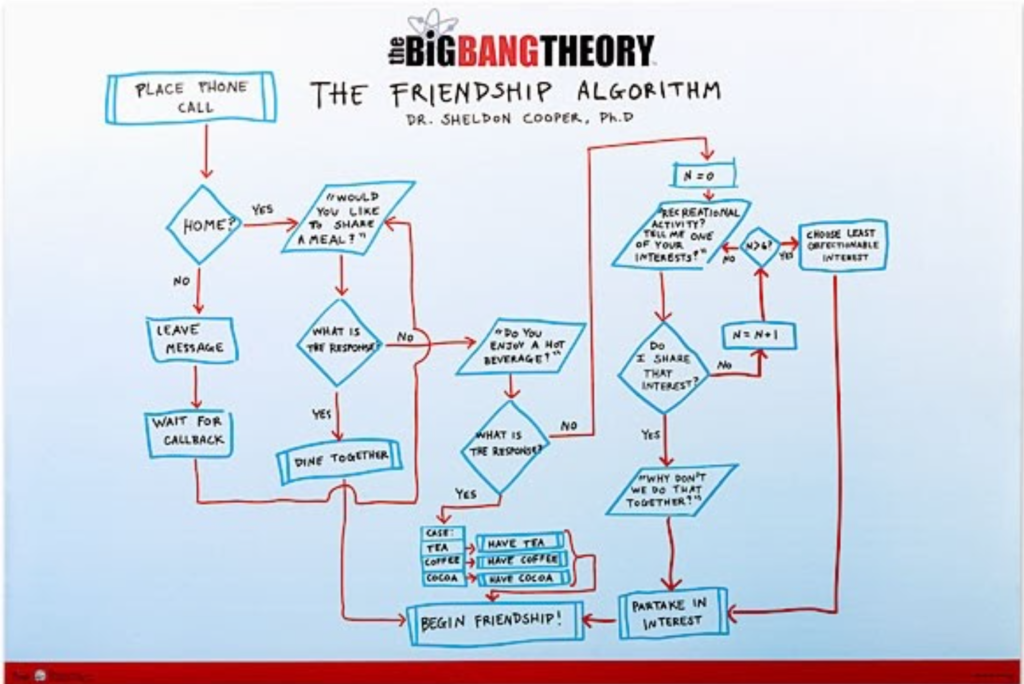There has been a lot of talk recently about algorithms. For starters, there was the educational debacle this summer, with initial A-level results having to be adjusted due to problems with the algorithm.
But that is only the tip of the iceberg. Behind the scenes, algorithms are being used to make major decisions about our lives in areas such as finance, insurance and healthcare. Algorithms are also used in recruitment, though this is now subject to GDPR regulations.
But what exactly is an algorithm? And how are algorithms used in digital marketing?
In this article we are going to look briefly at:
- What is an algorithm?
- Why have algorithms got a bad press?
- How to make algorithms work for your digital marketing strategy
What is an algorithm?
Put simply, an algorithm is a list of instructions. A step by step guide of what to do when.
Built into the list are the equivalent of decision boxes. For example, if a condition is True, do A. If it is not then do B.
A memorable example is the infamous Friendship Algorithm created by Sheldon in The Big Bang Theory.

The idea behind algorithms is that if used effectively they can automate decision-making processes. When used with machine learning and AI, they can begin to replicate the thinking processes of the human brain.
The path through an algorithm depends on the information you put into it. As well as information being input manually, over time algorithms are also able to learn your preferences and apply them as needed during the process.
Why have algorithms got a bad press?
The three main issues are that algorithms can appear to be intrusive, they can be biased, and they can sometimes be just plain wrong.
Let’s take a look at each of these in turn.
Algorithms can appear to be intrusive
We’ve probably all been part of discussions along the lines that the Internet is reading your mind. You may just have been thinking or chatting about something and the next day there’s an advert for that very product or service in your social media feed or online article. This leads many people not only to mistrust technology, but to have concerns that it is somehow monitoring them and intruding on their privacy.
The reasons for this are much more easily explained and much less sinister, even though there is definitely the ultimate intention to get you to part with your money. Social media platforms will gather data based on your interactions such as what you search for, pages you follow, posts you like and comment on, videos you watch. This data is then combined with other demographic data such as your age and geographical location. Algorithms will piece this data together to learn more about what you are interested in and will then tailor ads and other sponsored content to show in your feed. The primary objective is to keep you looking and scrolling, then there is more chance of you moving onto buying.
Playing your part in raising this awareness of the use of algorithms and big data may help to make people less suspicious of the origins of targeted advertising, and perhaps more open to some of the products and services on offer.
Algorithms can be biased
Even though algorithms use machine learning and artificial intelligence to automate decision making, the original input is still made by humans. So this input is subject to human bias and can affect the flow and outcomes of the algorithm.
One high profile example of this is the Apple credit card, underwritten by Goldman Sachs. The card was introduced towards the end of 2019 but it soon became clear that in some cases, women were being offered lower credit limits than men, despite having similar incomes and credit scores.
That raised concerns about lending algorithms being set up – either intentionally or unintentionally – to treat borrowers differently due to gender, race or other factors. The case is currently under investigation.
Algorithms can be wrong
The third issue with algorithms is that they are not foolproof. They can be wrong.
A well-known example of this is with the UK 2020 A-level results. Students did not sit the exams due to the Covid-19 lockdown. So their results were initially determined by an algorithm set in place by Ofqual.
Whilst we saw above that many algorithms use “big data” to build up a comprehensive profile of a consumer, the Ofqual algorithm used very small amounts of data to facilitate speed and ease of processing. The four main items of data were the school’s historic results, the pupil’s predicted grades, previous accuracy of predicted grades, and the percentage of the class with GCSE results available.
Whilst these are all useful pieces of information, the algorithm failed to build in any further personalisation that could have provided a more complete picture of a student’s capability. Instead it placed more weight on making grading decisions based on past performances of totally different cohorts of students. Thankfully the algorithm issues were quickly recognised and admitted, and results were based instead on teacher assessments.
There have also been algorithm accuracy issues on various social media platforms. As we saw earlier, these algorithms will develop your consumer profile depending on your interaction with different pages and posts. But this can sometimes mean that if you explore negative or even extremist content – not because you like or agree with it, but just to find out what is being said – you may then find yourself beginning to see more and more of this type of content. This is because most algorithms can only measure interaction rather than intent.
In the words of Oren Segal from the Anti-Defamation League (ADL), “algorithms have to be taught to be responsible”.
Three ways that algorithms can enhance your digital marketing strategy
So, algorithms are all around us. Like it or not, they are here to stay. As we have seen, they are by no means perfect but are constantly evolving and improving.
Let’s look at three ways that you can begin to use the awareness and power of algorithms responsibly to enhance your digital marketing strategy.
Social Media
All social media platforms use algorithms to determine what content is put in front of users at any given time. So it is important to keep up to date with any algorithm changes that these platforms are making – for example via Facebook Newsroom – and adapt your posting strategy accordingly. Otherwise you may find that your content is no longer hitting your target audience.
Whilst the social media platforms vary in terms of specifics, some general things to focus on are:
- Find the best time to post for the target audience you are trying to reach.
- Make your posts open and transparent: avoid controversy or clever tricks.
- Include interactive elements wherever possible, for example surveys and polls.
- Always remember the popularity and effectiveness of video and images.
- Don’t overdo external links: platforms don’t like posts that drive traffic away.
- If you want to post the same content more than once, do it in different ways each time.
- Get involved in relevant groups and start conversations.
- Encourage your employees and followers to share your posts for wider reach.
- Invest in paid advertising on the platform. This can achieve an excellent ROI.
All Google search activity is based on algorithms. So you need to understand how these work in order to ensure the best chance of your SEO achieving good positioning for your site in search results.
Google can change its search algorithm up to 500-600 times every year, but many of Google’s algorithm updates are fairly minor and may not impact on your site at all. But occasionally there is a major update that shakes everything up.
There are two key things to do to work with Google algorithms. The first is to keep on top of any major changes by regularly checking information from Google such as its products blogs. Also analyse the performance of your site when algorithm changes do happen, to see if they are making a difference to your results.
Secondly, focus constantly on getting content and SEO right. Ensure that your content is good quality, readable and engaging for your users. Make sure that you are using relevant and up to date keywords, and answering the questions that you think readers will be asking. Continue to work on earning links from credible and authoritative sites. If you can do all these things on a continual basis then you should be well-protected from any potentially adverse effects of any algorithm changes.
Web personalisation
Algorithms can also be used to personalise the appearance of your website to a specific user to ensure that the right content is put in front of them at the right time. By installing web personalisation tools, you are able to gather data via cookies and user behaviour.
This data can then be processed through an algorithm that will change content on various pages of your site so that it is tailored to the user. This tailoring can include retargeting, so that previously seen content is presented differently on another page, increasing the chances of conversion.
We will focus more on web personalisation tools in a future article.
We hope that this article has helped you to understand a little more about what algorithms are, how they can be used in digital marketing, and what the potential drawbacks may be. By constantly expanding your understanding of how algorithms work, and adapting your digital marketing strategy accordingly, you can increase your visibility to your target audience, and begin to gain the edge over your competitors
